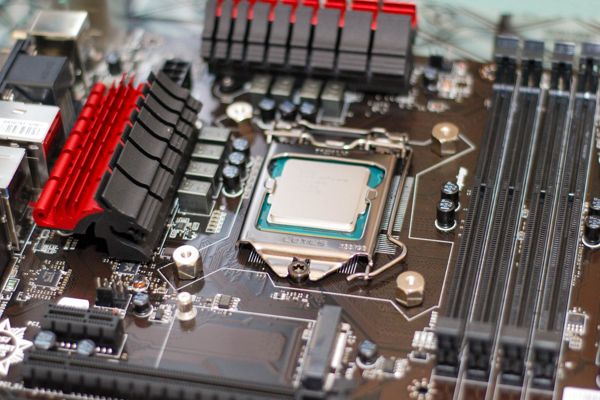
Ultimate Guide to Monitoring CPU Temperature in Windows 11

Discover how to easily check your CPU temperature on Windows 11 with a built-in method and free third-party apps Using BIOS/UEFI, Core Temp, Speccy, and Open Hardware Monitor, you can keep your processor temp in check and learn more about normal and maximum temperatures for your CPU
Using BIOS/UEFI
Finding out your CPU's temperature on Windows 11 is easy with a built-in method and free third-party apps. One way to do this is by accessing your machine's UEFI menu, also known as the BIOS. This menu displays various information about your system, including your processor's temperature. However, it's worth noting that this method only shows the CPU temperature when Windows 11 isn't loaded. So, if you're trying to investigate if a particular app or game is causing your CPU to heat up, this method may not be useful. Furthermore, not all BIOS menus provide CPU temperatures, so it may not be available on your device.
If you'd like to try using this method, open the Settings app on your Windows 11 PC by pressing Windows+i. From the left sidebar, select "System," and on the right pane, choose "Recovery."
To access the "Recovery" page, click on the "Advanced Startup" button and select "Restart Now" from the prompt window.
Note: Ensure that you have saved all unsaved work on your PC as it will shut down during the process.
Once your PC restarts, navigate to the Troubleshoot menu and select "UEFI Firmware Settings" before clicking on "Restart". This will take you to the BIOS/UEFI menu.
To find your CPU's current temperature, look for the "CPU Core Temperature" or a similar option in your BIOS/UEFI settings. If you can't find it on the main page, check out other tabs like "Advanced." If you still can't find any information on temperatures, try using one of the third-party tools recommended below.
Using Core Temp
One such tool is the free Core Temp app, which allows you to monitor your CPU's temperature from the app's main screen or from your system tray. This app also displays the temperature for each core of your CPU, which can be helpful in certain situations.
To use the app, simply visit the Core Temp website in your web browser, download and install the app on your desktop. During installation, be sure to deselect the option that installs junkware on your computer.
Open the Core Temp app and navigate to the “Temperature Readings” section to view your current CPU temperature. The temperature readings are dynamic and will update as your CPU temperature fluctuates. Alternatively, you can quickly access your CPU temperature by clicking on the app in your system tray, which will display the temperature for each core directly in the system tray.
Using Speccy
If you're looking for a reliable and free way to monitor your CPU's temperature on Windows 11, Speccy is an excellent option. This application not only provides you with your CPU's temperature, but also other essential insights about your computer.
To get started, simply navigate to the Speccy website using your preferred web browser, and download and install the software on your device.
Once installed, launch the app and head over to the "CPU" section. Here, you'll be able to view your CPU's temperature in real-time.
To check the temperature of each core in your CPU, navigate to the “CPU” section in the left sidebar of the app. The temperature of each core can be found in the “Cores” section located on the right pane.
Using Open Hardware Monitor
Open Hardware Monitor is an excellent tool for monitoring your CPU's temperature and finding information about your computer's components. It is a free and open-source application that can be downloaded from the Open Hardware Monitor website. Once downloaded, simply extract the ZIP file and install the app on your computer.
To access the temperature readings of your CPU, navigate to the folder where you extracted the ZIP file. Right-click on the “OpenHardwareMonitor.exe” file and select “Run as Administrator.” This is necessary to obtain access to the temp and other sensors. When prompted by the “User Account Control,” select “Yes.”
Once the app is open, locate the “Temperatures” section on the screen. Here, you’ll be able to view the temperature of each core of your CPU.
The app also provides valuable insights into your system's health by displaying the temperature of your hard drive or SSD drive.



















